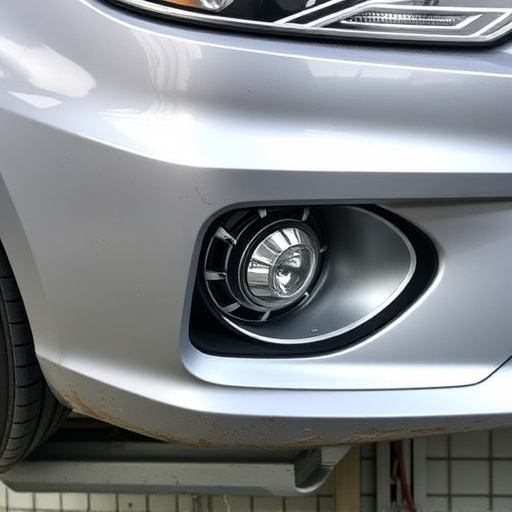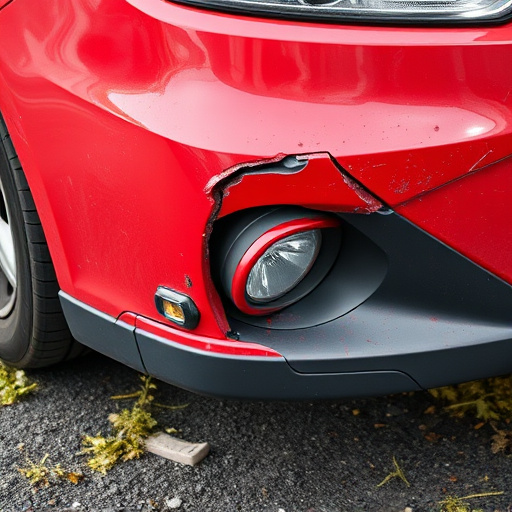Airbag module replacement requires a deep understanding of its key components—inflator, sensor, and airbag—to ensure passenger safety. Advanced diagnostic tools like specialized scanners, thermal imaging, and CAD software identify defects, while quality control measures verify new modules' functionality. This meticulous process is crucial, as faulty airbag modules pose significant safety risks, unlike routine repairs like dent removal.
Airbag modules are critical safety components in modern vehicles, ensuring passenger protection in the event of a collision. This article delves into the essential role of diagnostic tools during the complex process of airbag module replacement. We explore the intricate details of airbag module components and their significance in automotive safety. Additionally, we discuss advanced techniques for diagnosing defective modules and highlight efficient replacement processes that prioritize safety and quality control, emphasizing best practices for reliable airbag module replacements.
- Understanding Airbag Module Components and Their Importance
- Diagnosing Defective Modules: Techniques and Technologies
- Efficient Replacement Process: Ensuring Safety and Quality Control
Understanding Airbag Module Components and Their Importance

The airbag module is a critical safety component in modern vehicles, designed to protect occupants during a collision. Comprising several sub-components, each plays a vital role in ensuring effective deployment and functionality. Understanding these intricate parts is essential for efficient airbag module replacement processes. The module typically includes the inflator, a pyrotechnic device that generates gas, propelling the airbag; the sensor, which detects collision forces; and the airbag itself, a flexible cushion made to rapidly inflate and protect drivers and passengers.
During a car collision repair or vehicle body shop replacement procedure, technicians must carefully handle these parts to maintain safety standards. Proper identification and assessment of damaged or faulty modules are crucial steps in the airbag module replacement process, as they directly impact the overall effectiveness of the system in future accidents. Ensuring each component is in good working order guarantees optimal passenger protection, making it a critical aspect of vehicle repair services.
Diagnosing Defective Modules: Techniques and Technologies

Diagnosing defective airbag modules is a critical step in ensuring safety and quality during airbag module replacement. Advanced techniques and technologies play a pivotal role in identifying issues that may go unnoticed to the untrained eye. One such method involves specialized diagnostic tools capable of conducting thorough inspections, testing various components, and simulating deployment conditions. These tools can detect minute defects or anomalies, from electrical malfunctions to structural integrity problems, ensuring only fully functional modules are installed.
In the realm of airbag module replacement, modern diagnostic systems utilize advanced sensors and imaging technologies. For instance, infrared thermal imaging can reveal heat discrepancies indicative of potential failures. Additionally, computer-aided diagnostics (CAD) software enables mechanics to compare actual module conditions against original specifications, facilitating precise identifications of deviations. These innovative car paint services and frame straightening techniques, often employed in Mercedes Benz repair, have enhanced the accuracy and efficiency of airbag module replacement processes.
Efficient Replacement Process: Ensuring Safety and Quality Control

An efficient airbag module replacement process is paramount for ensuring both safety and quality control within the automotive industry. This involves a meticulous series of steps that begin with a thorough inspection using advanced diagnostic tools. These tools allow technicians to accurately identify faulty modules, pinpoint potential issues, and verify compatibility with the vehicle’s system. By leveraging technology such as specialized scanners and sensor checks, auto repair professionals can confidently proceed with replacement, minimizing the risk of further complications.
The process extends beyond the initial diagnosis and installation. Rigorous quality control measures are implemented to verify the proper functioning of the new airbag module. This includes conducting simulated deployment tests to ensure the airbag inflates correctly under emergency conditions. Such meticulous attention to detail is crucial in maintaining the highest safety standards, making every vehicle safe for operation on the road—a critical aspect when considering that a fender repair or dent removal might be a temporary solution, while a faulty airbag module represents a serious and potentially life-threatening issue.
Airbag module replacement is a critical process that demands precise diagnostic tools to ensure passenger safety. By utilizing advanced techniques and technologies for diagnosing defective modules, technicians can efficiently proceed with replacements, upholding quality control standards. This meticulous approach not only safeguards lives but also reinforces the reliability of vehicles equipped with these essential safety systems.














